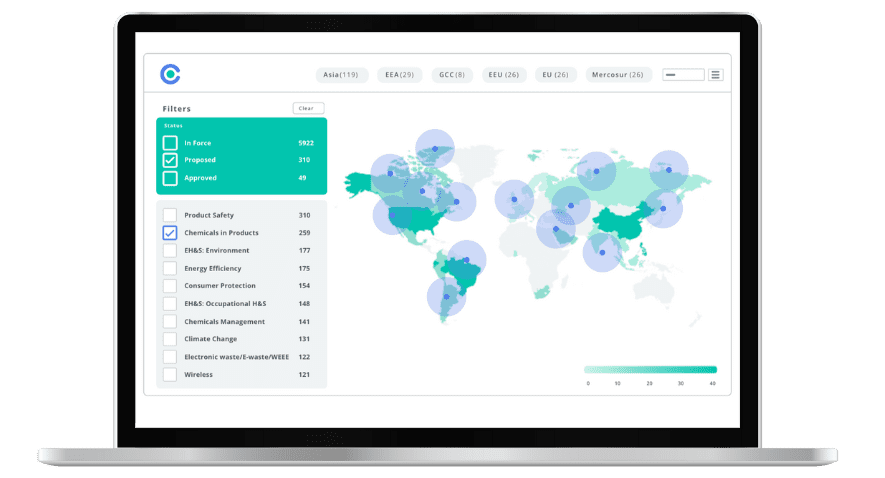
Proposed Textile Extended Producer Responsibility Under the EU Waste Framework Directive

This blog was originally posted on 8th April, 2024. Further regulatory developments may have occurred after publication. To keep up-to-date with the latest compliance news, sign up to our newsletter.
AUTHORED BY MARIA MARECKI, MARKET ACCESS MANAGER, COMPLIANCE & RISKS
Introduction
A Proposal to revise the EU Waste Framework Directive (2008/98/EC) in order to address food and textile waste was published in July 2023.
Objectives for this proposal regarding textiles include prioritizing waste prevention, preparing for re-use and recycling of textiles over other recovery options, and disposal and implementing the polluter pays principle.
In March 2024, the European Parliament adopted their first reading position on the proposed revision of the EU Waste Framework Directive. The text includes changes to the text that had previously been proposed by the European Commission. Read on for an overview of this proposal regarding textiles.
Extended Producer Responsibility (EPR)
Under the Proposal, EPR schemes for textiles, textile-related and footwear products across EU member states, with eco-modulation of fees will be introduced. These schemes would have to be established eighteen (18) months after the entry into force of the Directive. This is down from thirty (30) months that had been proposed by the Commission. Member States would also have to ensure the separate collection of textiles for re-use, preparing for re-use and recycling by 1 January 2025.
As per proposed Article 22a, Member States shall ensure that producers have extended producer responsibility for textile, textile-related and footwear products listed in Annex IVc that they make available on the market for the first time within the territory of a Member State. Member States shall ensure that producers of the products listed in Annex IVc designate a producer responsibility organization to fulfill their obligations established in Article 22a on their behalf.
Under Article 22a, by 31 December 2024, the Commission would adopt a delegated act in regards to laying down rules on the establishment of EPR for personal protection equipment as referred to in Regulation (EU) 2016/425.
Annex IVc, products falling within extended producer responsibility covers products such as clothing and accessories, blankets, bed linen, curtains, hats, footwear. This includes products that contain textile-related materials such as leather, composition leather, rubber or plastic.
Parliament made changes to broaden the scope of Annex IVc. The mention of “household” was removed in order to include non-household products. Mattresses and carpets were also included.
By 31 December 2027, Member States would have to ensure that producers of carpets and mattresses as referred to in Part 2a of Annex IVc, whose main composition is textile, that make available those carpets and mattresses on the market for the first time within the territory of a Member State, shall have extended producer responsibility in accordance with Articles 8 and 8a. Member States may decide to establish a separate extended producer responsibility scheme specifically for those items.
Registration
Article 22b requires Member States to establish a register of producers. Member States shall only allow producers to make available on the market for the first time within their territory the products in Annex IVc where they or, their authorized representatives for the extended producer responsibility, are registered in that Member State.
Information Available to End-Users
The Proposal requires that certain information will have to be provided to end-users. The Commission shall develop comprehensive guidelines for producers to report electronically back to the producer responsibility organizations the necessary information referred to in Article 22c(13) and Article 22c(17).
Article 22c(13), states that Member States ensure producer responsibility organizations make available to end-users, in particular consumers, the certain information regarding the sustainable consumption, re-use and end-of-life management of textile and footwear including:
- The role of consumers in contributing to waste prevention, including any best practices, notably by fostering sustainable consumption patterns and promoting good care of products while in use;
- Re-use and repair arrangements available for textile and footwear, including the location of collection points and how to correctly donate textiles;
- The role of consumers in correctly contributing to the separate collection of used and waste textile and footwear;
- The impact on the environment, human health as well as social and human rights of textile production, in particular fast-fashion practices and consumption, recycling and other recovery and disposal and inappropriate discarding of textile and footwear waste, such as littering or discarding in mixed municipal waste.
Per Article 22c(17), Member States shall ensure that producer responsibility organizations publish on their websites the specified information on the amount of products placed on the market, the rate of separate collection of used and waste textile, textile-related and footwear products listed in Annex IVc, including such unsold products, on the rates of re-use, preparation for re-use and recycling, specifying separately the rate of fiber-to-fiber recycling, achieved by the producer responsibility organization, and on the rates of other recovery, disposal and exports.
EU Waste Framework Directive: Next Steps
Regarding next steps, the file will be followed up by the new Parliament after the 6-9 June European elections.
Stay Ahead Of Regulatory Changes
Want to stay ahead of regulatory developments like the EU Waste Framework Directive?
Accelerate your ability to achieve, maintain & expand market access for all products in global markets with C2P – Your key to unlocking market access, trusted by more than 300 of the world’s leading brands.
C2P is an enterprise SaaS platform providing everything you need in one place to achieve your business objectives by proving compliance in over 195 countries.
C2P is purpose-built to be tailored to your specific needs with comprehensive capabilities that enable enterprise-wide management of regulations, standards, requirements and evidence.
Add-on packages help accelerate market access through use-case-specific solutions, global regulatory content, a global team of subject matter experts and professional services.
- Accelerate time-to-market for products
- Reduce non-compliance risks that impact your ability to meet business goals and cause reputational damage
- Enable business continuity by digitizing your compliance process and building corporate memory
- Improve efficiency and enable your team to focus on business critical initiatives rather than manual tasks
- Save time with access to Compliance & Risks’ extensive Knowledge Partner network

Simplify Your Product Compliance Process with C2P
Design & build new products with full confidence you’ve met all compliance obligations



